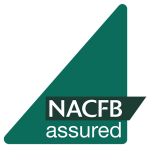By Matthew Dilks, bridging and commercial specialist, Clever Lending
One of the downsides of being a buy-to-let (BTL) landlord is missing out on a property due to a lack of available funds. Both landlords and investors need to move quickly when it comes to buying a property and not having enough equity to hand can make this extremely difficult.
With the mortgage market currently in a constant state of flux, this is becoming increasingly common. Rising interest rates and ongoing uncertainty has seen many lenders quickly withdraw products from the market, often without a great deal of notice.
In fact, figures from financial data firm Moneyfacts shows 10 per cent of mortgage deals were pulled from the market in the last week of May, while rates on two- and five-year fixed rate deals have risen to 5.61 and 5.52 per cent respectively.
What is the impact for landlords?
The short-lived nature of many of these mortgage products means landlords may be missing out on the chance to secure a mortgage before it is withdrawn and are therefore, unable to move forward with a property purchase. Higher interest rates may also mean you may be starting to feel a squeeze on affordability and profit margins.
Many landlords are also facing the increased possibility of not being able to secure an attractive rate when remortgaging, which may mean they have to move onto a standard variable rate product transfer and face even higher costs.
Bridging loan
In each of these scenarios, a bridging loan could help you to address these problems by providing you with a solution of accessing funds quickly, therefore reducing the chance of missing out on a property purchase.
This is because bridging loans are designed to help bridge the gap until longer-term financing can be found and are ideal in situations where you may move quickly because you need money to buy a new property or renovate an existing one.
There are actually a number of reasons why you may take out a bridging loan including to improve the property by carrying out works to upgrade a boiler or install double glazing or loft and wall installation in order to meet the upcoming Energy Performance Certificate requirements.
Perhaps you have taken stock of your property portfolio and are looking for ways to increase your yields by carrying out minor renovations such as painting and decorating to increase the value of under-performing assets.
Or maybe you would like to buy an unmortgageable property at auction and completely renovate it to a high standard before exiting the loan and refinancing onto a standard mortgage before renting out the property or selling it on for a profit.
You can also use a bridging loan to prevent a chain break when there is a risk of losing the property in the later stages of a deal. By taking out a bridging loan, you can use the funds to secure the purchase while you wait for another property to sell.
The current uncertainty in the mortgage market means being able to move quickly and with ease is important for landlords and investors looking to expand and improve their property portfolios.
Lenders are continuing to pull mortgages at a rapid rate, which means remortgaging may no longer be a viable option for some. In which case, a bridging loan could prove to be a viable alternative by enabling you to quickly access funds in an increasingly uncertain market.




















